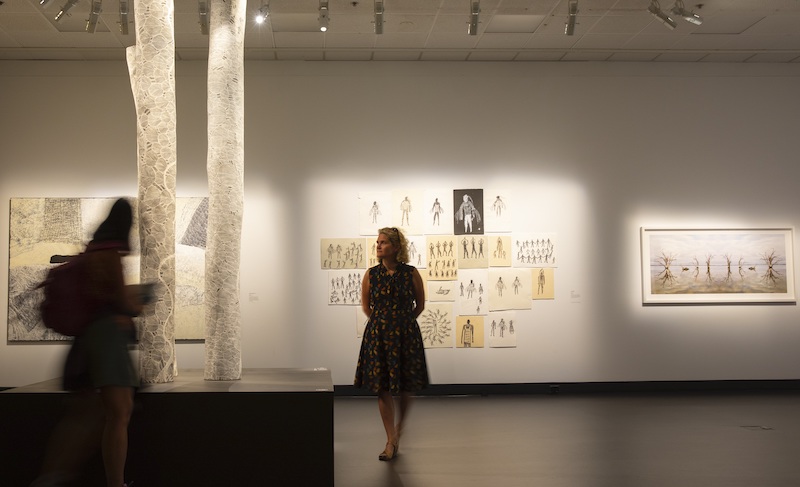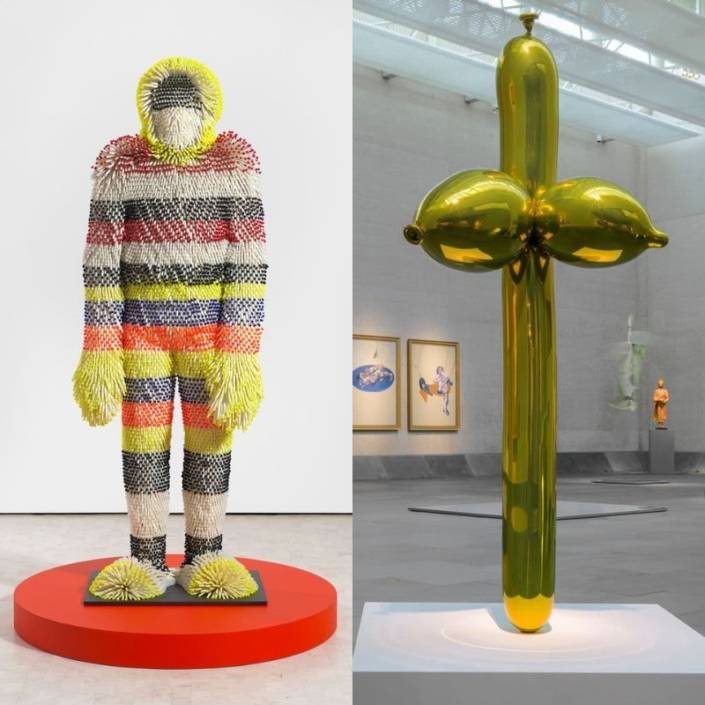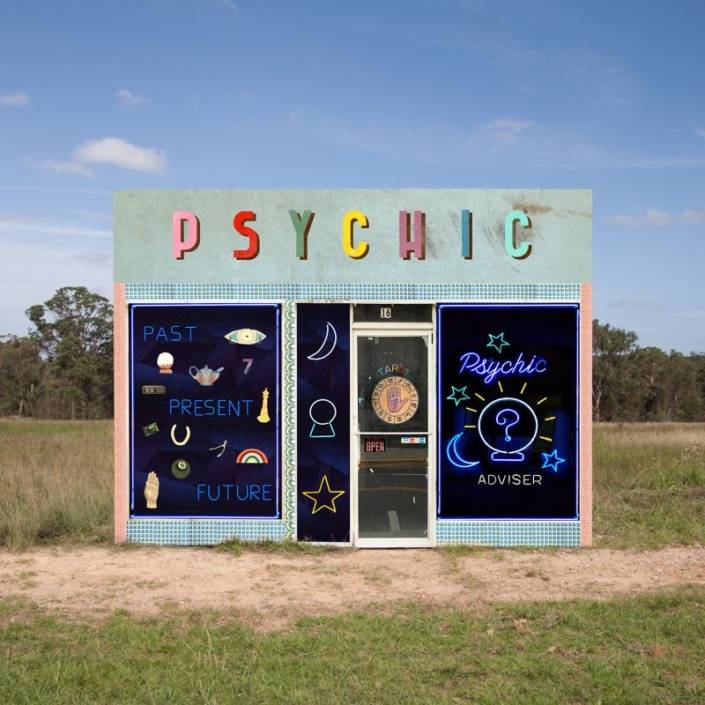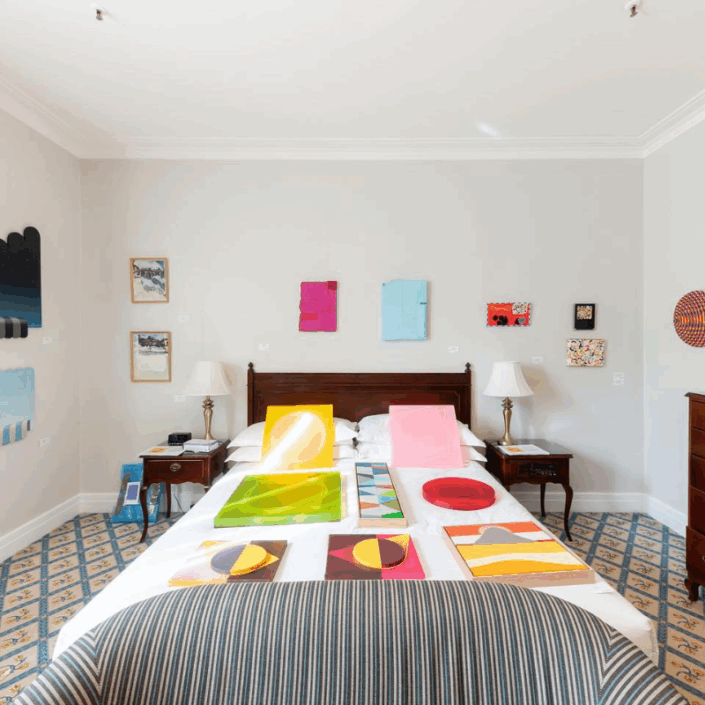And the NATSIAA winners are…
280 entries. 68 finalists. 7 winners. 1 global exhibition.
Words: Camilla Wagstaff
The Telstra National Aboriginal and Torres Strait Islander Art Award (NATSIAA) is widely considered the most prestigious Indigenous art prize on the annual calendar. Each year, the award brings together outstanding works by Aboriginal and Torres Strait Islander artists from across the country, providing a comprehensive snapshot of Indigenous practice today.
This year 68 finalist works were selected from 280 entries. The seven category winners – judged this year by Art Gallery of South Australia director Rhana Devenport, Tiwi artist and cultural leader Pedro Wonaeamirri and Tasmanian Museum and Art Gallery senior curator of Indigenous cultures Zoe Rimmer – were announced at a vibrant award ceremony hosted on the sprawling MAGNT lawns.
Addressing the winners, MAGNT’s curator of Aboriginal art and material culture Luke Scholes noted: “Through your art, not just Australia, but the world is listening … We wait for the day when we as a nation come to terms with what it means to be Australian. Art – your art – shows us the way.”
Yolngu artist Djambawa Marawili took out the major prize for his commanding large-scale work on stringybark, Journey to America. The piece reflects on the artist’s recent travels to the USA to share cultural knowledge and history. The judges spoke to a tremendous power and spirit in the work that ultimately guided their decision. “Personally, I walked in and it hit me,” says Devenport. “This painting takes you to places you’ve never dreamed of.”
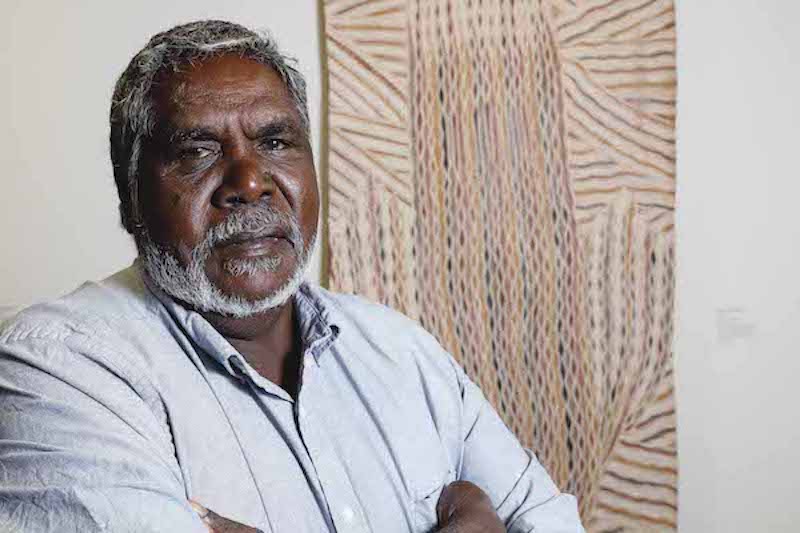
Winner of the 2019 Telstra Art Award, Djambawa Marawili AM, with his work Journey to America. Photo: Fiona Morrison.
Reflecting on his win, Marawili notes the importance of acknowledging the artists and cultural leaders of the past, who have continued to pass cultural knowledge through myriad generations. “The songs are still alive. The language is still alive. The connections are still alive,” he says. “That is something I really appreciate.”
This year, the exhibition takes over a second gallery space at MAGNT for the first time, giving the finalist works much-needed space to breathe. “The quality of the work this year demanded two spaces,” says Scholes. “This is a global exhibition now; we have people travelling from all over the world to see this work.”
Another first for the show is an online voting system to decide the People’s Choice Award, giving all Australians a chance to have their say on the strongest work. You can cast your vote on the NATSIAA website.
The category winners
Indulkana artist Kaylene Whiskey picked up the Telstra General Painting Award for her work Seven Sistas. The judges noted the artist’s clever reclaiming of televised pop culture idols and her celebration of female empowerment and sisterhood. Watch out for Whiskey’s forthcoming solo show at Sydney’s Roslyn Oxley9.
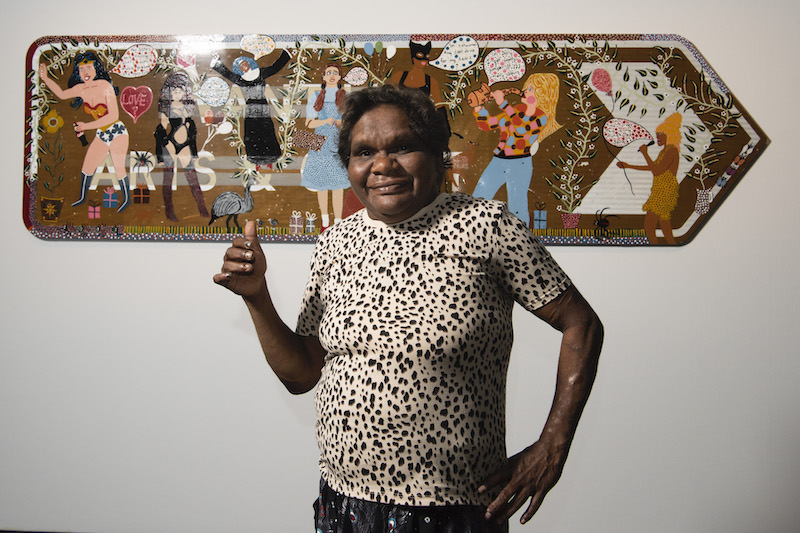
Kaylene Whiskey, winner of Telstra General Painting Award with her entry Seven Sistas, 2019. Photo: Merinda Campbell.
The Telstra Multimedia Award went to Gutingarra Yunupingu for his inspirational video work that quite uniquely speaks to communicating cultural identity and connection in the Yirrkala community. “I was born hearing impaired, so my family and friends communicated with me using Yolngu Sign Language (YSL),” says the artist. “Where I live Yolngu teach all children YSL from a young age, so it means I can communicate with my community easily.” The work becomes all the more poignant when we consider that 2019 is the UN-declared Year of Indigenous Languages.
The Telstra Bark Painting Award was awarded to Yirrkala superstar Nonggirrnga Marawili. Marawili is internationally recognised for injecting vibrant colour into her bark works, developing a unique and distinctive language to carry important cultural knowledge. Her winning work Lightning Strikes is rendered in natural pigments and discarded magenta print toner.

Telstra Bark Painting Award winner, Noŋgirrŋa Marawili with her work Lightning strikes. Photo: Fiona Morrison.
Malaluba Gumana won the Wandjuk Marika Memorial 3D Award for her impressively large larrakitj (memorial poles) Rainbows in the Lilies. Gumana is a pioneer of the marwat (cross-hatching) technique which innovatively employs a finely controlled hairbrush. “Her exquisite painting depicts her mothers’s Galpu clan designs of dhatam (waterlilies) and djari (rainbow),” note the judges, “while the scale and scope declares her deep immersion in these powerful stories”.
Gumana is the cover artist on Art Collector’s 2019 Darwin Aboriginal Art Fair special edition.
New talent Titus Nganjmirra took out the Telstra Emerging Artist Award for his striking work on paper Queen Elizabeth. “The sophisticated and concentrated work is both serious and playful,” note the judges, “referencing Australia’s history of colonisation and the resilience of Indigenous culture”.

Telstra Emerging Artist Award winner, Titus Nganjmirra with his work Queen Elizabeth. Photo: Fiona Morrison.
The Telstra General Works on Paper Award was deservedly awarded to the late Nyaparu (William) Gardiner, who created the intimate and inventive work specifically for this year’s NATSIAA before he passed away last year. Fittingly, the work honours and pays respects to elders past: “Doing these paintings is how I remember our old people,” said the artist. “We can’t forget our old people … my paintings are about remembering them now they passed away.”
The Telstra NATSIAA award exhibition shows at MAGNT, Darwin, from 9 August to 3 November 2019.
Image: NATSIAA winners, judges, MAGNT and Telstra representatives. Photo: Camilla Wagstaff.

